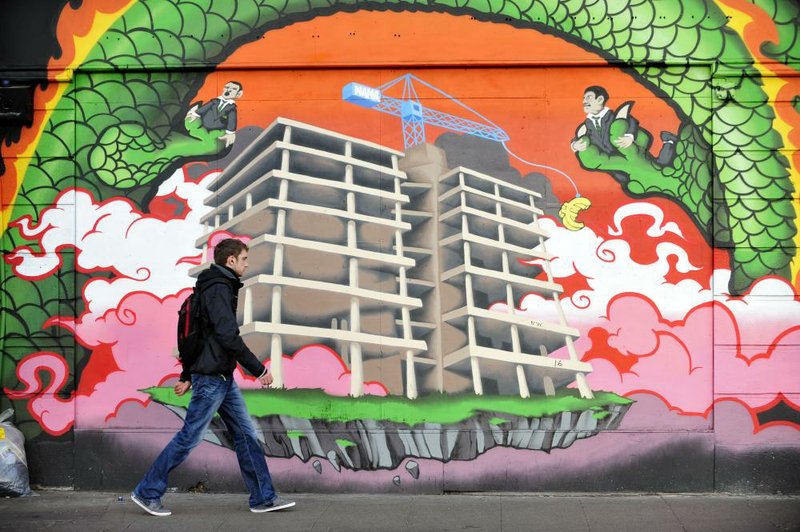DUBLIN - Ireland’s three-year bailout ordeal ends this weekend, a victory in its battle against bankruptcy. But while the government is ready to finance itself without aid, the Irish still can’t escape what has become Europe’s longest-running austerity program.
The Irish faced economic ruin in 2010, when the runaway cost of a bank-bailout program begun two years earlier destroyed the country’s ability to borrow at affordable rates. To the rescue came fellow European nations and the International Monetary Fund with a three year loan package worth $93 billion.
The last of those funds arrived in Ireland’s state coffers this week. On Sunday, Prime Minister Enda Kenny will address the nation on live TV to salute the financial rebound that has eluded the eurozone’s other bailout recipients Greece, Portugal and Cyprus.
Unlike them, Ireland has repaired its fiscal reputation by exceeding a series of deficit-cutting targets and avoiding both labor unrest and protracted recession. That surprisingly strong performance has allowed Ireland since mid-2012 to resume limited auctions of long-term bonds at affordable rates, an essential prerequisite to life without an European Union-IMF safety net.
Ireland’s treasury also has built up more than $27.5 billion in reserves that, should disaster strike again, would permit the state to pay its bills through 2014 without any immediate need for renewed aid.
International confidence that Ireland can resume financing its debt repayments on its own means the yields - the effective interest rates - on Irish 10-year bonds today have fallen to below 3.5 percent from 2011 highs exceeding 15 percent. That’s lower than Spain, which has received emergency support for its banks but avoided a full-fledged bailout, and Italy, which finances one of the eurozone’s worst per-capita debts.
The most obvious evidence of renewed confidence at home is all the “sold” signs appearing in Dublin, home to nearly a third of the country’s 4.6 million residents and the epicenter of a property bubble that burst with disastrous effects in 2008.
Property prices had slumped more than 50 percent in the five years since as credit crumbled, banks drowned in toxic assets and hundreds of thousands became trapped in negative equity.
Ireland still faces a mountain to climb to achieve its key goal of reducing annual deficits below 3 percent of gross domestic product, the limit imposed on all 17 nations using the euro currency.
Ireland recorded a European Union record deficit of 32 percent in 2010, the year the bill for sustaining the country’s six domestic banks grew so large that Ireland’s own credit ratings crumbled.
But since coming to power in early 2011, Kenny’s government has reformed banking regulation, negotiated with the European Union to spread out bank-debt repayments over several decades and imposed tens of billions in annual cuts and new taxes targeting every sector of society.
As part of its reform agenda, European Union and IMF chiefs ordered Ireland to impose new charges and limits on the state old-age pension system, on welfare pay for the young and to introduce a new property tax in line with international practice. A water tax is still in the pipeline for next year.
Ireland’s major economic think tank, the Economic and Social Research Institute, estimated in a report this week that five straight years of cuts dating to the early days of the 2008 banking crisis have pruned most workers’ take-home pay by about 12 percent, while those best off have lost more than 15 percent of their incomes.
Ireland’s deficits have marched steadily downward from 8.2 percent last year to an expected 7.3 percent this year.
Finance Minister Michael Noonan said Ireland hopes to post a 4.8 percent deficit in 2014, then 2.9 percent in 2015. But he said Ireland would keep pruning to get its later deficits down to the eurozone’s future rule of below 0.5 percent of GDP.
“This isn’t the end of the road,” Noonan said of the bailout exit. “This is a very significant milestone on the road, and it gives us an opportunity to pause and reflect for a very short period.
“But we must continue with the same types of policies, because the deficit is too high. It has to be brought down below 3 percent, and then it has to be brought into balance in subsequent years. The debt is too high, and we have to have strategies to make the debt even more sustainable than it is now.”
Business, Pages 29 on 12/14/2013
